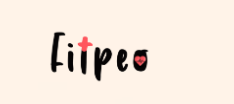The healthcare industry is rapidly evolving, and one of the most significant advancements in patient care is the ability to monitor vital health metrics remotely. Among these innovations, the pulse oximeter has emerged as a key tool for tracking oxygen levels in the blood, enabling healthcare providers to monitor patients without needing them to be physically present. In this blog, we explore how pulse oximeters are transforming remote patient monitoring and improving health outcomes.
What is a Pulse Oximeter? A pulse oximeter is a small, non-invasive device that measures the oxygen saturation (SpO2) level in your blood. It typically clips onto a fingertip or earlobe and uses light sensors to determine how much oxygen your blood is carrying. For patients with respiratory conditions or those undergoing treatments that affect their oxygen levels, the pulse oximeter provides real-time, vital information that can be crucial for managing their health.
The Role of Pulse Oximeters in Remote Monitoring: Pulse oximeters are increasingly being used in remote patient monitoring (RPM) to track the oxygen levels of patients with chronic conditions such as asthma, COPD, or COVID-19. By sending oxygen readings directly to healthcare professionals, these devices allow doctors to monitor patients' conditions from afar. RPM systems can alert healthcare providers if a patient’s oxygen levels drop to dangerous levels, enabling them to intervene promptly.
Benefits of Pulse Oximeters for Remote Monitoring:
-
Continuous Monitoring:
Pulse oximeters provide real-time data, ensuring continuous monitoring without requiring patients to visit healthcare facilities. This is especially beneficial for elderly or bedridden patients who may find it difficult to leave their homes for routine check-ups. -
Improved Patient Outcomes:
Early detection of issues like low oxygen levels allows healthcare providers to take quick action, preventing complications and hospitalizations. With consistent monitoring, patients can stay in better control of their conditions. -
Convenience and Comfort:
For patients, using a pulse oximeter at home offers convenience and comfort. The device is easy to use and provides immediate feedback, helping patients feel more secure in managing their health. -
Cost-Effective Healthcare:
RPM systems can reduce hospital admissions and visits, lowering healthcare costs while maintaining high-quality patient care. Pulse oximeters, as part of an RPM setup, offer a cost-effective way to manage patient health outside traditional clinical settings.
How Pulse Oximeters Work in Remote Monitoring Systems: Pulse oximeters in remote patient monitoring systems are often integrated with mobile apps or healthcare platforms. Once a patient uses the device, their oxygen levels are automatically sent to the healthcare provider’s system. These systems may also include features like automatic alerts if levels fall below safe thresholds, appointment scheduling, or advice on lifestyle changes to improve health.
The Future of Pulse Oximeters in Telemedicine: As telemedicine continues to grow, the role of devices like pulse oximeters is expected to expand. With advances in connectivity, sensors, and AI-driven analytics, the integration of pulse oximeters with other monitoring tools will provide even more comprehensive insights into patient health, leading to more personalized and efficient care.
Conclusion:
are a vital part of the future of healthcare, enabling remote patient monitoring that is more efficient, convenient, and proactive. Whether it’s chronic illness management or post-surgery care, these small devices are playing an essential role in improving patient outcomes and reducing healthcare costs. As technology continues to advance, pulse oximeters will likely become even more integral to the healthcare ecosystem, making remote monitoring the standard for patient care.

